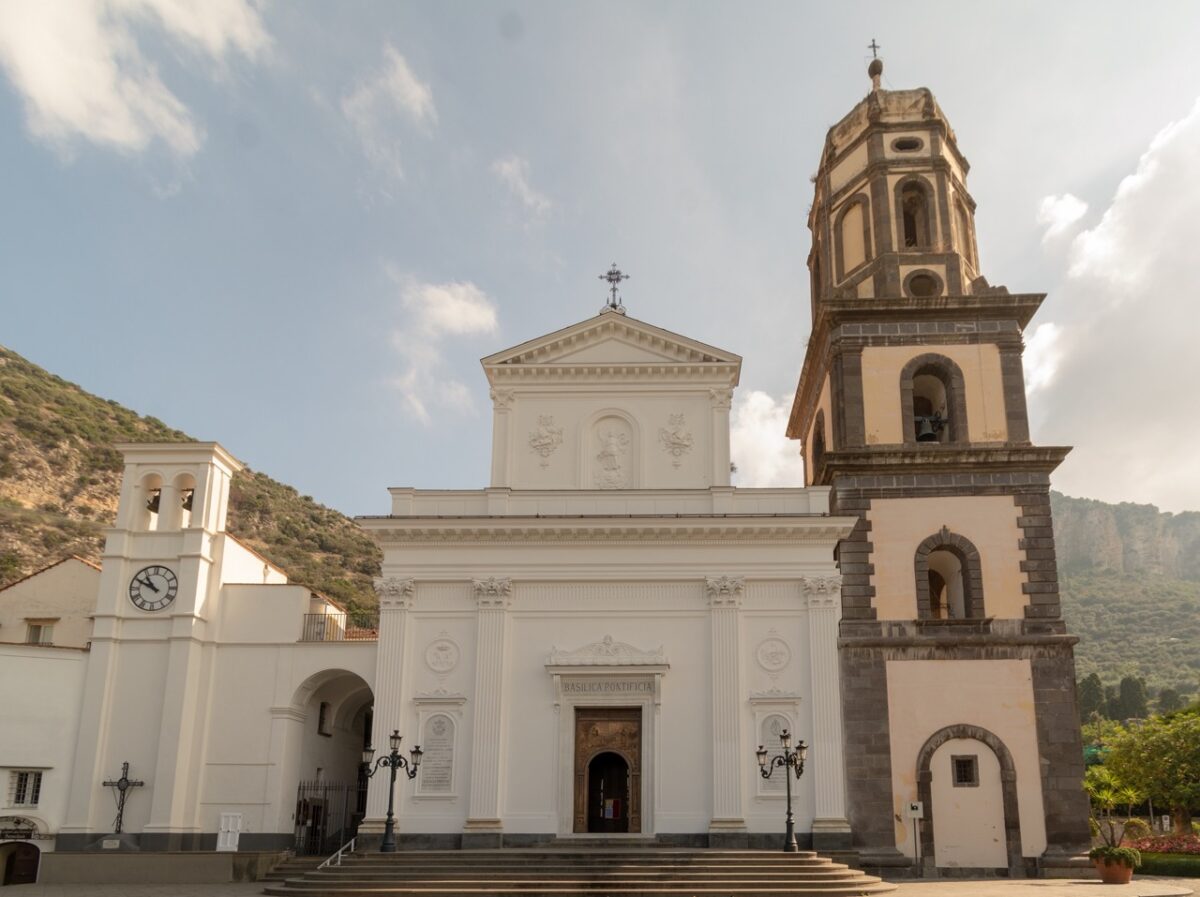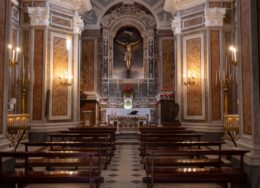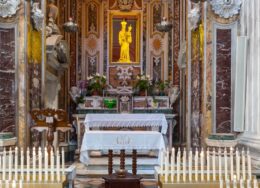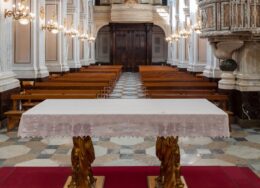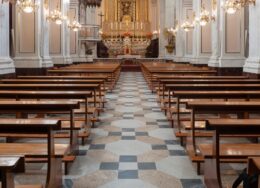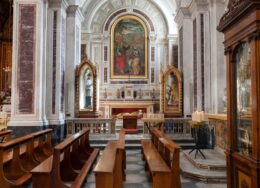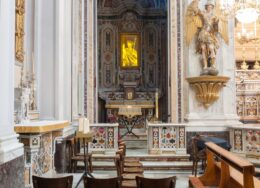Gallery
Description
After having braved the curves of the state road S.S. 145 and having lost your gaze on the marvelous view overlooking the sea, you pass in front of the majesty of the Basilica of Santa Maria del Lauro, just outside the historic centre. An imposing basilica, in neoclassical style, but with a Baroque-style bell tower.
It is the main church of Meta, to which the people of Meta are particularly devoted, and it represents a strong identifying trait of this seafaring population.
The history of the Basilica of Santa Maria del Lauro is intertwined between myth and legend and dates back to the Byzantine period, the same attributed to the statue of the Madonna placed between the end of the 8th and the beginning of the 9th century, a time when the Sorrento area was precisely under the emperor of Byzantium. At that time the Metesi had an excellent Merchant Navy and frequented the ports of the East and Palestine. So it was normal in the area to find Byzantine works.
According to tradition, the Basilica was born where a small pagan temple once stood dedicated to the god Apollo, the purifier, a god to whom, coincidentally, the laurel was sacred. Here, where before there were only woods, there was a laurel tree (also called laurel); legend has it that a deaf-mute old lady, while grazing her cow, saw a tongue of fire burning without going out near the laurel tree. Intrigued, she approached and found at the foot of the plant, the statue of the Madonna, in Byzantine style. At that time, in fact, following the iconoclastic struggles unleashed by the Byzantine emperor against sacred images, it was not unusual to find religious representations abandoned or hidden to avoid their destruction imposed by the emperor. About the origin of the statue, on the historical level it is possible that it was made in the East and transported here by sailors, so much so that it was sculpted by a local artist.
In fact, following the discovery, the old lady miraculously regained her sight and hearing and the whole town cried out for a miracle. Given the uproar caused by the extraordinary nature of the event, the then Bishop of Sorrento had the statue transported to his Cathedral, but the next morning, miraculously, it was found under the laurel in Meta. This was repeated over and over again, and so the statue was definitively left in Meta and since then the statue has been venerated as the “Madonna del Lauro”.
Between the 9th and 10th centuries, the population was induced to build a larger temple that could accommodate the growing number of faithful who came to venerate her. Over the years, the vicissitudes of the Basilica of Santa Maria del Lauro have been very difficult because it was repeatedly destroyed and looted, and each time rebuilt and enriched by the inhabitants. Even in 1782 it was necessary to rededicate it, due to the many works carried out! In 1914 it was elevated to a Pontifical Basilica and was the diocesan Jubilee seat for the Holy Year of 2000.
In any case, a visit to the church is a must to better understand a people who find their history and identity in it, a proof lies in the fact that the Cappellone di San Pietro inside which is dotted with ex-votos sailors dated between ‘600 and ‘900, the seafaring era.
Characteristics
The facade of the Basilica of Santa Maria del Lauro is in neoclassical style and dates back to the first half of the 19th century. All the facade decorations are in stucco. The entrance portal is in iron, but behind it there is another one in wood.
The interior of the Basilica has a Latin cross layout, with a central nave, with a barrel vault, separated from the two lateral ones, with a cross vault.
Inside there are several chapels. The main one, made of marble, is dedicated to the Madonna del Lauro. In fact there is a wooden statue of the Virgin.
In the patronage chapel of the De Martino family it is possible to admire a statue of St. Peter, from the second half of the 16th century and a sculpture depicting the dead Christ, from the 19th century.
In addition to the two just described, there are three other chapels, one of these dedicated to Our Lady of the Rosary.
It is also possible to admire numerous works of art, among the most significant are the statues of the Guardian Angel and Saint Michael, dating back to 1640. Inside the sacristy, on the other hand, it is possible to see frescoes depicting the triumph of faith , by Costantino Desiderio from 1783, a canvas by Luca Giordano, with the theme of the expulsion of merchants from the temple in Jerusalem and inlaid wooden wardrobes dating back to 1765, the work of craftsmen from Nocerino.
from the website “About Sorrento.com”
Contatti del Santuario
| Indirizzo: | Piazza del Lauro, 1 – 80062 Meta (NA) |
| Telefono: | 081 878 8050 |
| Mail: | info@santamariadellauro.com |
Celebrazioni
| Feriali: | ore xx:xx |
| Festivi: | ore xx:xx |
| Altri appuntamenti: | giorno x |
| Confessioni: | giorno x dalle xx:xx alle xx:xx |



